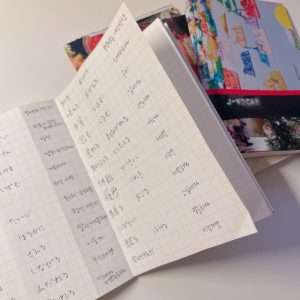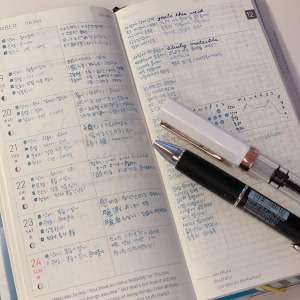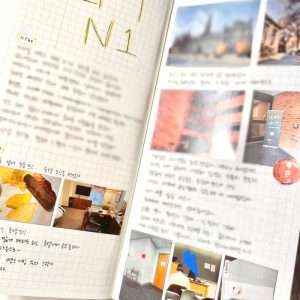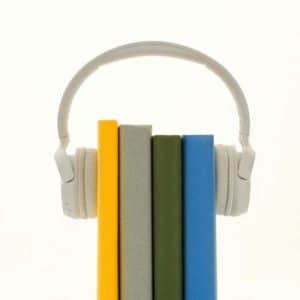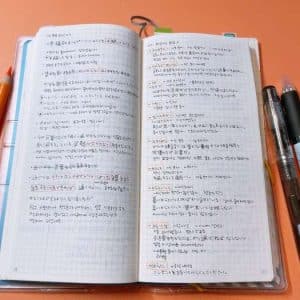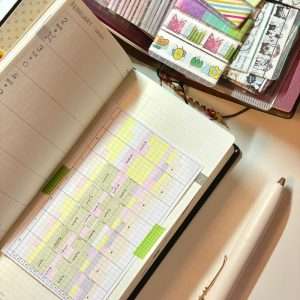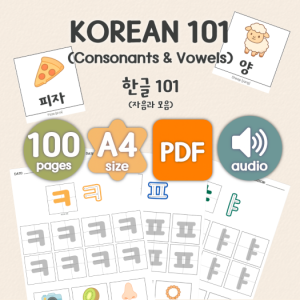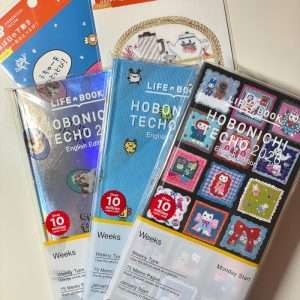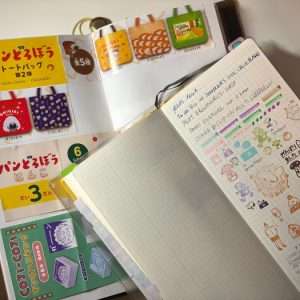Why I Chose the JLPT: My Journey to Learning Japanese
Why I started studying JLPT is deeply connected to my childhood experiences in Japan and my early fascination with learning Japanese. I first visited the country when I was 8 or 9 years old, and even at that young age, I was captivated. The people were kind, the streets were clean, and the little shops were charming. It was unlike anything I had ever seen, and those memories stayed with me. This early exposure sparked a fascination with Japanese culture that remained in the background of my life for years before eventually resurfacing in a meaningful way.
Table of Contents
The Movie That Started It All
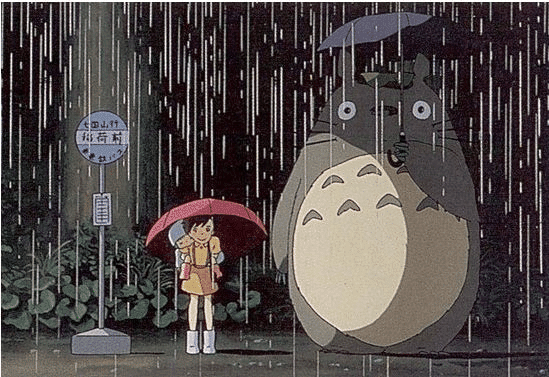
One day, my dad brought home a VCR tape, and that moment changed everything. The animated movie featured a giant fluffy creature helping a young girl find her sister. I didn’t understand the language, but I was completely fascinated. I watched it over 20 times, trying to absorb every detail. Years later, I learned that the movie was My Neighbor Totoro (1988) by Studio Ghibli, and that realization made me reflect on its impact. It wasn’t just a cute story. It was my first real connection to Japanese culture. That one film ignited my curiosity, leading me to explore more Studio Ghibli movies like Castle in the Sky and Kiki’s Delivery Service. Each film transported me to a world that felt both unfamiliar and deeply comforting.
Ghibli films stand out not just for their storytelling but for their ability to evoke deep emotions through breathtaking animation and immersive fantasy worlds. The stunning visuals, hand-drawn details, and magical settings sparked my imagination, while the music of Joe Hisaishi made each scene even more memorable. These films carried thought-provoking themes about nature, resilience, and human connection, making them just as meaningful for adults as they were for children. Over time, my love for Japanese animation grew beyond Studio Ghibli, and I found myself drawn into the vibrant world of anime, where new stories continued to fuel my fascination.
Discovering the Richness of Japanese Culture
As I watched more anime, I unknowingly took my first step toward learning Japanese by picking up common words, phrases, and even recognizing some hiragana from subtitles. Beyond the language, anime also introduced me to aspects of Japanese culture, sparking my curiosity about traditions like cherry blossoms, tea ceremonies, and the deep respect embedded in speech and actions. These small cultural details fascinated me and made me want to learn more about Japan.
This growing interest extended beyond anime, leading me to explore Japanese food, traditional architecture, and cultural festivals. I became intrigued by dishes like sushi, ramen, and okonomiyaki, while learning about shrines and ryokan inns deepened my appreciation for Japan’s aesthetics and history. I started following travel blogs and documentaries, each new discovery fueling my passion even more. Over time, I felt an increasing desire to connect with Japan on a deeper level, beyond what I had experienced through anime.
Why Is Learning Japanese So Challenging?
As I got older, life began to shift. The carefree days of anime marathons turned into high school pressures, where studying took priority. While I still watched anime occasionally, it became a rare treat. In college, work, and eventually family life, responsibilities took over, and learning Japanese faded into the background. I often thought about picking it up again, but between deadlines and exhaustion, finding time felt impossible. Occasionally, I’d hear Japanese in a show or see a phrase in passing, and it would stir something inside me—but I brushed it off, thinking that phase of my life was over.
Kanji: The Biggest Obstacle
One of the biggest reasons I hesitated to restart was Kanji. It felt completely overwhelming. While I picked up Hiragana and Katakana fairly quickly, Kanji seemed impossible to master. There were so many characters, each with multiple readings and meanings. The idea of memorizing thousands of them made me feel like I would never reach fluency. Before I even had a chance to really try, I had already given up. That fear of failure kept me from moving forward for years.
The Three Writing Systems
One of the things that makes Japanese different from most other languages is the fact that it uses three writing systems—Hiragana, Katakana, and Kanji. At first, I thought this wouldn’t be too bad since Hiragana and Katakana have a limited number of characters. But once I started reading actual Japanese texts, I realized how heavily Kanji is mixed in, making it hard to read fluently without knowing a large number of characters. I struggled with constantly switching between scripts, especially when I encountered Katakana words that didn’t resemble their English origins at all.
The Complexity of Kanji Readings
Another thing that frustrated me was how one Kanji could have multiple readings depending on the context. For example, 生 can be read as sei, shou, nama, or ikiru, and there isn’t always an obvious pattern to which one is used. I would study a word and recognize the Kanji, only to come across the same character later and feel completely lost because it had a different reading. It felt like every time I made progress, I would hit another wall.
Sentence Structure vs. Grammar Differences
Since I already knew Korean, adjusting to Japanese sentence structure wasn’t difficult because both languages follow a Subject-Object-Verb (SOV) order. As I studied deeper, I realized that Japanese grammar was quite different from Korean grammar. That’s when the real challenge began. Verb conjugations, particles, and politeness levels had nuances that didn’t always match Korean. Certain expressions that felt natural in Korean didn’t translate the same way in Japanese. I often second-guessed my sentences because what made sense in Korean didn’t always work in Japanese.
Honorifics and Formal Speech (Keigo)
I thought I would be fine with Japanese honorific speech because I was already familiar with Korean honorifics, but I was wrong. Japanese has different categories of politeness, including sonkeigo (respectful speech), kenjougo (humble speech), and teineigo (polite speech). While Korean honorifics mostly apply to verb endings and some vocabulary changes, Japanese keigo feels much more structured, with specific words and phrases used depending on status and formality. I found it confusing at first, and even now, keigo still makes me hesitate when speaking formally.
Lack of Spaces in Writing
Another thing that surprised me was how Japanese doesn’t use spaces between words. At first, I thought I could recognize words easily since I was used to reading Korean, which also doesn’t use spaces in certain situations. But in Japanese, the mix of Kanji, Hiragana, and Katakana makes everything blend together. It took me a long time to train my eyes to separate words naturally. I often had to reread sentences multiple times to determine where one word ended and the next began.
How the JLPT Helped Me Get Back to Learning Japanese
One day, during a rare moment of downtime, I was browsing YouTube and stumbled upon a video of someone studying for the Japanese Language Proficiency Test (JLPT). It immediately caught my attention. Seeing someone actively preparing for the test triggered memories of my own experiences with Japanese and made me wonder: What would it be like to reconnect with the language and culture that had once fascinated me?
The idea of taking the JLPT felt both exciting and intimidating. I knew it wouldn’t be easy, but this time, I approached it differently. Instead of setting unrealistic expectations, I committed to studying in small, manageable chunks—even if it was just 30 minutes a day. I reminded myself that learning a language is a marathon, not a sprint. Preparing for the JLPT also gave me a clear target to work toward, breaking the process into structured levels that made progress feel more tangible rather than just vaguely studying Japanese.
One of the best things about the JLPT is that it sets clear expectations for what I need to learn at each stage. Instead of feeling lost in an endless sea of vocabulary and grammar, I could focus on specific goals, making studying more manageable. Plus, there were plenty of self-study resources—books, YouTube videos, and practice quizzes—designed specifically for the test. These tools made it easier to build a study plan, reinforce tricky grammar points, and measure my progress along the way. Thanks to the wide range of materials, I never felt like I was learning in isolation.
FAQs: JLPT and Learning Japanese
If you’re studying for the JLPT or just starting your Japanese learning journey, you might have questions about study methods, motivation, and whether the exam is necessary. Below are some common questions and answers to help guide you.
Q: Why take the JLPT for learning Japanese?
The JLPT (Japanese-Language Proficiency Test) is widely recognized and helps learners measure their Japanese skills in a structured way. Many people take it for personal goals, job opportunities, or study abroad programs. Unlike conversational exams, the JLPT focuses on reading, grammar, and listening, making it a solid benchmark for progress.
Q: Is the JLPT necessary to become fluent in Japanese?
No, JLPT certification isn’t required to become fluent, but it provides a structured learning path and motivates learners by setting clear goals. Since the test doesn’t assess speaking skills, combining JLPT study with conversational practice is key for fluency.
Q: How long does it take to pass JLPT N5 or N1?
JLPT N5 (beginner level) usually takes 300–600 hours of study, while JLPT N1 (advanced) can take 2,000+ hours depending on prior experience. Study consistency, immersion, and practice tests can speed up progress.
Q: How can I stay motivated while learning Japanese?
Staying motivated requires clear goals, fun study methods, and consistency. Mixing anime, books, podcasts, and speaking practice with JLPT prep keeps learning engaging. If you’re struggling with motivation, check out my JLPT Study Tips: How to Stay Motivated for practical strategies.
Q: What are the best study methods for passing the JLPT?
The best approach combines textbooks (like Shin Kanzen Master), vocabulary apps (Anki, Wanikani), grammar drills, and listening practice. Taking timed practice tests helps with pacing and exam confidence.
Q: Should I use a textbook or an app to learn Japanese?
Both work well depending on your learning style. Textbooks like Genki or Minna no Nihongo are great for structured learning, while apps like BunPro, Anki, and LingoDeer help reinforce grammar and vocabulary.
Overcoming Challenges and Staying Motivated
As an adult learner, I faced different challenges than I did as a student. I had limited time, and self-discipline was crucial. To stay motivated, I set small goals, such as mastering 30 vocabs each day or listening to a podcast in Japanese while commuting. Progress was slow, but consistent effort made a difference. If you’re struggling with motivation, check out my JLPT Study Tips: How to Stay Motivated for strategies that helped me stay on track.
To help keep myself accountable, I bought a Hobonichi planner specifically for my JLPT studies. I used it to log my daily progress, write down new vocabulary, and track grammar points that needed review. Having a physical record of my efforts made it easier to stay motivated. Looking back at previous entries reminded me how much I had learned, which encouraged me to keep going even when studying felt difficult. Seeing the pages fill up with notes and progress gave me a tangible sense of achievement, making the journey even more rewarding.
The Joy of Understanding Japanese Content
One of the most rewarding moments came when I watched a Japanese drama and realized I could understand more than I used to without subtitles. I started recognizing words and sentences, even if I couldn’t fully grasp the entire scene. Each time I caught a familiar phrase or understood a conversation, it felt incredibly satisfying. The small victories reassured me that my efforts were paying off and motivated me to keep improving. Even though I still relied on subtitles, recognizing pieces of dialogue gave me a sense of accomplishment.
Beyond media, I found myself understanding snippets of real-life conversations when traveling to Japan. Ordering food, asking for directions, and reading signs no longer felt intimidating. Every little success reaffirmed that I was making tangible progress. These moments reinforced my commitment to learning and showed me that my efforts were not just for studying—they were helping me connect with the language in real life.
Looking Toward the Future
Where does my JLPT journey go from here? It has now been about 10 months since I started studying, and I’m still enjoying it. While challenges remain, I feel more confident in my progress, especially with vocabulary and kanji. At first, the sheer number of characters felt overwhelming, but I’ve learned to focus on steady review rather than trying to memorize everything at once.
I plan to keep studying and eventually take the test to measure my progress, but more importantly, I want to enjoy the language naturally—through books, conversations, and everyday encounters. I hope to visit Japan again with a stronger command of Japanese, allowing for deeper cultural experiences. If you’ve ever wanted to learn but felt intimidated, just start small and let the journey unfold.
📖 Must-Read JLPT Study Tips & Strategies
- JLPT Test Results: How I Passed JLPT N1
- What to Expect on JLPT Exam Day: My Experience & Helpful Tips
- JLPT Study Guide: Last-Minute Preparation Tips for Success
- 5 JLPT Study Tips: How to Stay Motivated and Beat Burnout
- Improve JLPT Grammar Score: The Power of Reviewing Mistakes
- How to Improve JLPT Listening: Top Strategies & Tips
- Why I Chose the JLPT: My Journey to Learning Japanese
📖 Explore More JLPT Study Tips
Looking for more ways to improve your JLPT study routine? Check out all my JLPT Study Tips for in-depth strategies, exam preparation advice, and motivation!

